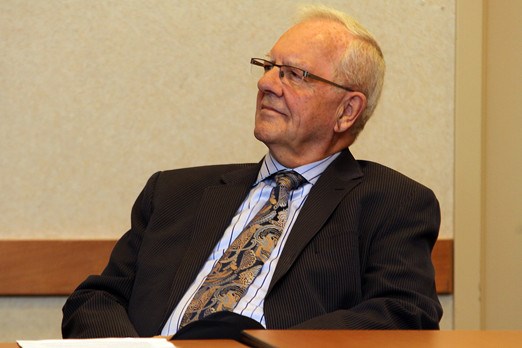The honeymoon phase is over at the Thunder Bay Regional Research Institute. Now it’s time to get down to business.
On Friday TBRRI officials laid out their five-year strategic plan, a goal that includes profiting from their research through spin-off companies and commercialization in order to sustain and grow the organization.
The plan also calls for scientists and researchers to focus on detectors and specialized MRI technology, an increase in clinical trials and the addition of clinical research in areas considered key to Thunder Bay Regional Health Sciences Centre’s priority areas.
Keith Jobbitt, chairman of TBRRI’s board of directors, said the next five years is about getting into the “nitty-gritty,” responsible for the hospital’s research and looking for new opportunities to make a profitable business plan.
“The bottom line is you can’t run any organization without money and that’s going to be very important for us to be able to continue,” Jobbitt said on Friday, emphasizing they’ll still be looking for support from all three levels of government moving forward.
“But a good part of our sustainability will have to depend on creating businesses that are going to generate revenue, they’re going to generate jobs here in Thunder Bay or in Northwestern Ontario. That’s going to be a major focus of our activity.”
Jobbitt added several of their research projects are on the cusp of implementation and nearing a state of production.
Michael Wood, TBRRI’s CEO and the vice-president of research at the hospital, said the plan renews the institute’s plans to help the hospital become an academic health sciences centre, while at the same time helping the region further develop its knowledge-based economy.
“It’s time, now that the institute is five years old, to recalibrate and set a course for the next four years.”
The relationship with the hospital is key, he added.
“Everything we do involved synergies and partnerships with other institutions so that we can leverage their help. And in science, almost every major advance today comes about through collaboration. The days are long gone when an individual can sit in their office and invent something,” Wood said.
Hospital CEO Andree Robichaud said the benefits of partnership are already being felt. The hospital wouldn’t have a PET scanner or be working toward a cyclotron without them, she said.
She likened the partnership to a tricycle, with the hospital in the lead wheel, propped up by the other two.
“The two real wheels are research and education,” she said, also giving a nod to the Northern Ontario School of Medicine.
“I think we’re well on our way. It’s a journey. It takes money. It takes commitment.”
TBRRI employs more than 100 staff, up from 15 when it opened in 2008, supports 14 full-time scientists and has conducted more than 60 clinical trials, generating more than $128 million in economic activity, according to figures supplied by the institute.
